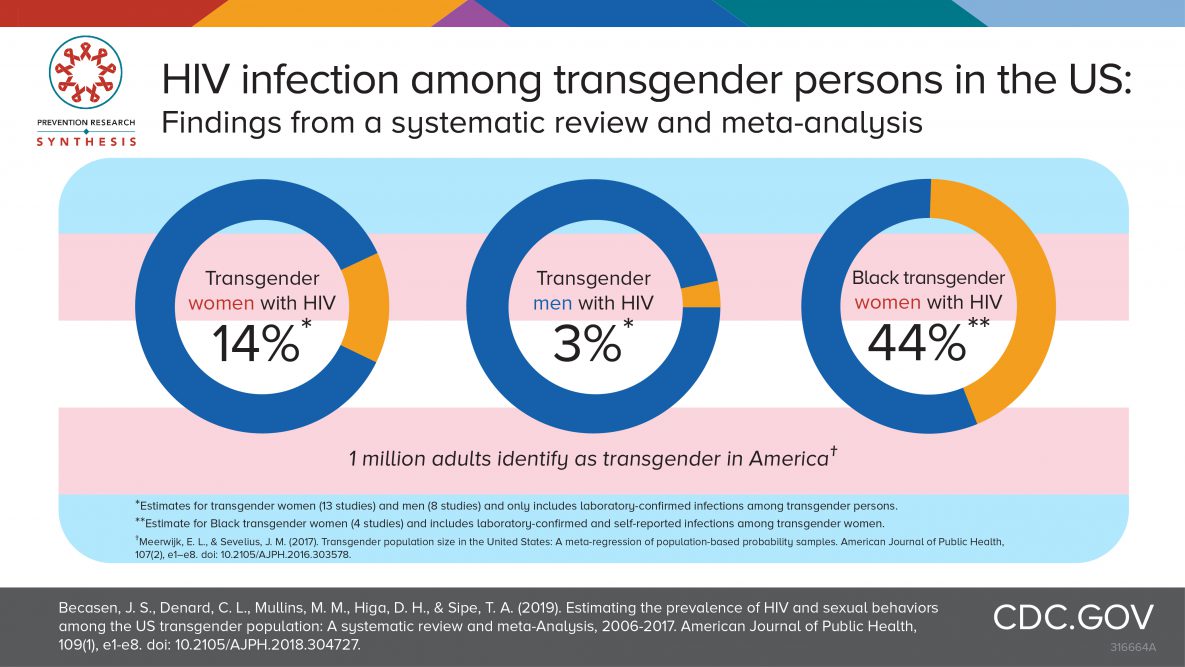Estimating the prevalence of HIV and sexual behaviors among the U.S. transgender population: A systematic review and meta-analysis, 2006 – 2017
Citation
Becasen, J. S., Denard, C., Mullins, M. M., Higa, D., & Sipe, T. A. (2019). Estimating the prevalence of HIV and sexual behaviors among the U.S. transgender population: A systematic review and meta-analysis, 2006 – 2017external icon. American Journal of Public Health, 109(1), e1-e8. doi: 10.2105/AJPH.2018.304727
Visual Abstract

Background
Hispanic/Latina and African American/Black transgender women (transwomen) have a higher chance of having HIV than transgender women who are White, Asian, and other racial and ethnic groups in the United States. Transgender men (transmen) also showed a higher chance of having HIV than cis-gender men based on the research available.
Questions addressed in the review
- How common is HIV among transgender persons in the United States?
- How common are HIV risk behaviors among transgender persons?
- How common are contextual factors related to higher risk of giving or getting HIV among transgender persons?
Search date
The review was finalized in December 2019 and covers publication years of 2006 – 2017.
Study characteristics
We found 88 studies overall (13 studies for transgender women and 8 studies for transgender men with laboratory-confirmed data). Most of the studies were cross-sectional surveys.
Key results
Fourteen percent of transwomen had HIV infection. Three percent of transmen had HIV infection. HIV infection was highest among Black transwomen (44.2%, in 4 studies of laboratory-confirmed self-reported data). Thirty-eight percent of transwomen took part in sex work. Forty-four percent of transwomen experienced depression and thirty-percent experienced unstable housing.
Quality of the evidence
More than half of the included studies were of high quality.
Study funding source
This study was funded by the Centers for Disease Control and Prevention.
Related Resources
- HIV Infection, Risk, Prevention, and Testing Behaviors Among Transgender Women: National HIV Behavioral Surveillance 7 U.S. Cities, 2019–2020 [PDF – 2.27 MB]
- HIV Prevention and Care for the Transgender Population
- HIV and Transgender People Factsheet
- HIV and Transgender Communities Issue Brief
- HIV and Transgender People: Terminology and HIV Diagnoses
- National Transgender HIV Testing Day – April 18
- Transgender Health Resources
- LGBT Hotlines and Health Clinics by State and City

